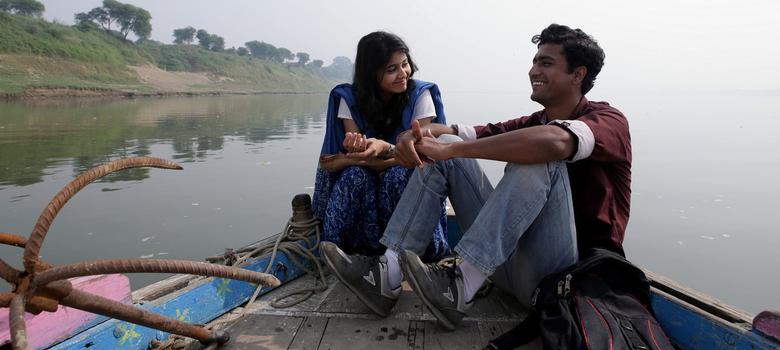
Encouraging though the vitality of Indian cinema is, the change in balance I mentioned has more to do with the plummeting standards of Hollywood, driven by the industry’s dependence on reboots and tired franchises. Take James Bond, for instance. Daniel Craig says he’s done with the spy who drinks vodka martinis, but I doubt he’s as sick of the character as we movie viewers are. Sam Mendes, who helmed the last two Bond films, has immaculate credentials, and, aside from an inexplicable fascination with smoky interiors, has handled the task with assurance. But having led us into a joyless cul de sac with Skyfall, he reversed course and tried quirkiness and humour inSpectre, only to serve up a tepid echo of past adventures.
The Daniel Craig tetralogy departed from its predecessors by probing Bond’s character and his past. A decade ago, it seemed a welcome shift after the overblown foolishness of Pierce Brosnan’s final gigs, but what started by deepening the character ended by narrowing Bond’s universe. Nothing encapsulates that shrivelling better than the magnificently apocalyptic title Skyfall turning out to be merely the name of Bond’s old home. His adversary in that film, played by Javier Bardem, has mommy issues, and the villain of Spectre, the notorious Ernst Stavro Blofeld resurrected, has daddy issues. We are told that Blofeld’s father had adopted the young Bond after he was orphaned, to the frustration of the young Blofeld, then named Franz Overhauser.
Same old, same old
Instead of straightforwardly evil villains out to rule the world, the Sam Mendes Bond films give us embittered individuals seeking revenge for decades-old grudges. But who has any interest in psychoanalysing Blofeld? The final Brosnan films proved that old-style evil villains no longer pass muster, but their reinvention in the Craig films is even less appealing. The old language is dead, and nothing’s been found to adequately replace it.
I suspect we will not see another Bond movie for many years, but we have at least two further editions in the Star Wars saga to look forward to (or dread). Like the Daniel Craig Bonds, The Force Awakens is a much better film than the horrible prequels that preceded it, but exposes the exhaustion of the franchise precisely because it is well made. I watched the movie in IMAX 3-D, in a crowd that cheered every time a familiar name was re-introduced. Here’s Han Solo (claps and cheers), and here’s Chewie (claps), here’s Leia (a few claps), here’s C3PO (almost no claps), here’s R2D2 (more claps). Not only has JJ Abrams peopled his take on Star Wars with old characters, and made it the old way by concentrating on physical effects and puppets rather than computer generated imagery, he’s basically remade the old film. And here, as with Bond, we encounter daddy issues (or maybe granddaddy issues) in the mind of Han and Leia’s tortured Darth Vader wannabe son. The man doesn’t need a helmet to breathe, but wears one anyway in homage to Vader.
If Star Wars has turned into a family soap opera disguised as an inter-galactic adventure, back on earth, Rocky Balboa is still running up the steps of the Philadelphia Museum of Art 40 years after we first watched him do so. He’s now in the company of the son of his opponent-turned-friend Apollo Creed. Creed’s son is an outsider given a surprise shot at the title who almost pulls off an improbable win. If that’s not enough déjà vu, maybe you’ll enjoy watching dinosaurs running amuck on an island. Yet again.
Familiar territory
Hollywood’s cynical studios are wedded to sequels to the point of stretching series beyond breaking point by dividing every final act into two separate movies, but it has been that way for a long time. What made this year so disappointing was the absence of alternate individual voices to balance the assault of the blockbusters. Where is the Birdman or Boyhood of 2015, where the Gravity or 12 Years a Slave? Good films were produced this year, but none broke new ground. Besides, three of the best-reviewed of the lot, Mad Max: Fury Road, Bridge of Spies, and The Martian, were directed, respectively, by the 70 year-old George Miller, the 69 year-old Steven Spielberg, and (wait for it) the 78 year-old Ridley Scott. I’m awed that they have retained their creativity, energy and ambition when they could coast on accolades received in the past, but it doesn’t say much for an industry when its best work comes from senior citizens rather than fresh voices.
What a contrast India provides. None of 2015’s most interesting films was made by an industry veteran, aside from SS Rajamouli’s Baahubali. Shonali Bose, Navdeep Singh, and Sharat Katariya each directed their second features with Margarita with a Straw, NH10, and Dum Lagaake Haisharespectively. Chaitanya Tamhane, Avinash Arun, Neeraj Ghaywan, and Kanu Behl made their debuts with Court, Killa, Masaan, and Titli. I can’t think of another year that produced such a spectacular collection of first features. Most of these films brought to life a micro-culture, depicting specific, accents, clothing, and architecture, in contrast with the ahistorical tradition of the industry which has usually sought to douse everything in a generic sauce.
I don’t want to extrapolate from these observations to suggest a shift in the zeitgeist. Despite the rank commercialism of its studios, Hollywood offers many avenues for offbeat ventures, and 2015 just happened to be a really bad year when none of them saw the light. The flourishing of creativity in India, meanwhile, remains constrained by many factors, most importantly our stifling censorship which only got worse this year. For the moment, though, I’m celebrating. If I was to give a title to what this year meant to Indian cinema, I’d call it A New Hope. I’m now waiting for the empire to strike back.



